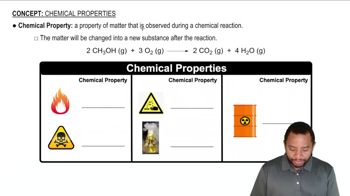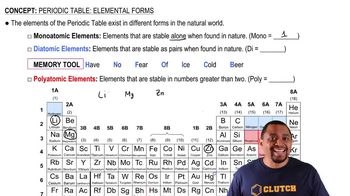Textbook Question
The industrial production of hydriodic acid takes place by treatment of iodine with hydrazine (N2H4):2 I2 + N2H4 --> 4 HI + N2(a) How many grams of I2 are needed to react with 36.7 g of (N2H4)?
 Verified step by step guidance
Verified step by step guidance


Write chemical equations for the reaction of potassium with the following substances, making sure that the numbers and kinds of atoms are the same on both sides of the equations. If no reaction occurs, write N.R.
(a) H2O
Write chemical equations for the reaction of calcium with the following substances, making sure that the numbers and kinds of atoms are the same on both sides of the equations. If no reaction occurs, write N.R.
(c) Br2
Write chemical equations for the reaction of calcium with the following substances, making sure that the numbers and kinds of atoms are the same on both sides of the equations. If no reaction occurs, write N.R.
(d) O2